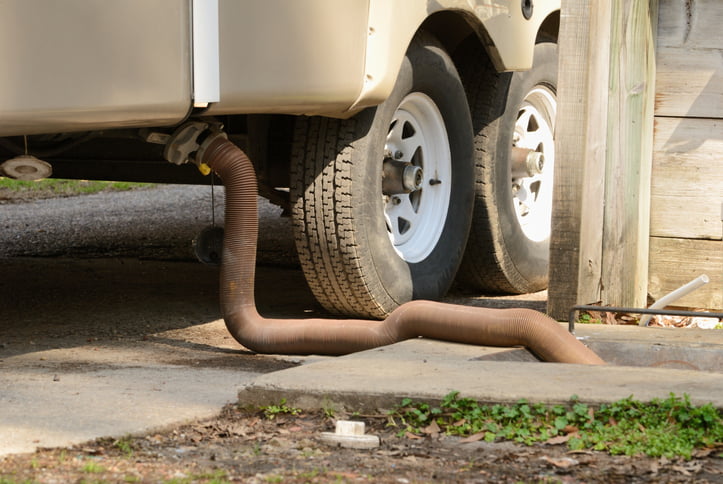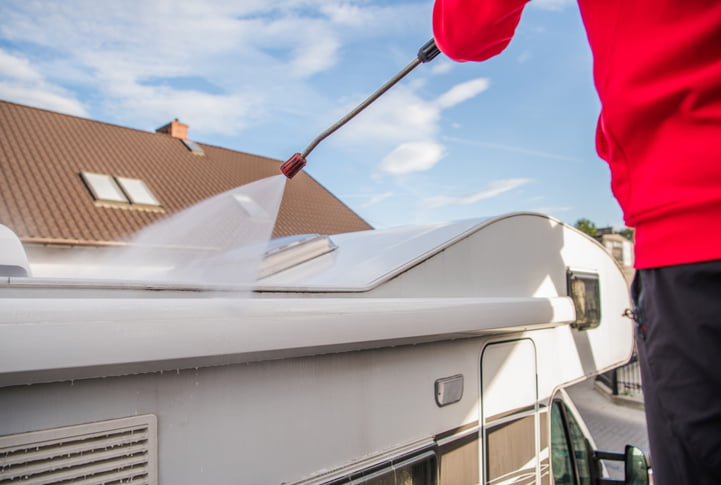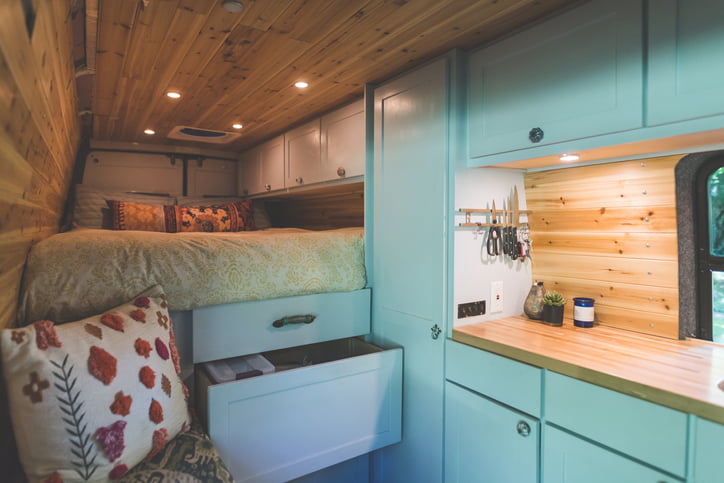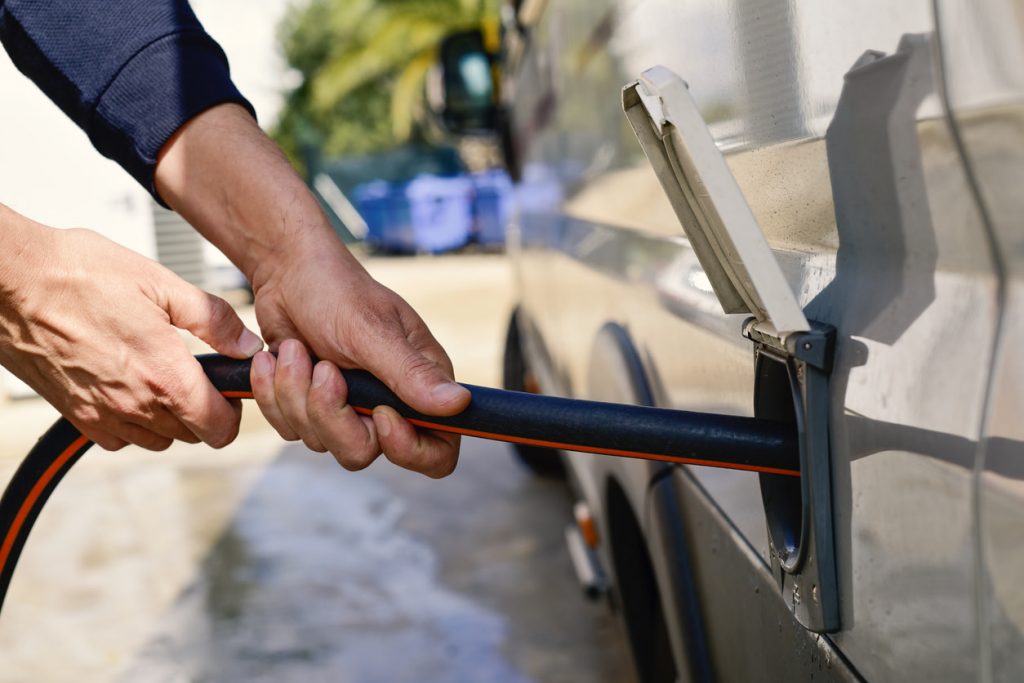If you have a self-contained RV, then you probably have three holding tanks. The fresh water holding tank, the grey water holding tank that collects dirty water from the sinks and shower, while the black water holding tank is for the toilet only. The grey and black tanks end in one main outlet that is used to empty both tanks. This is where you connect your sewer hose.
As you never know how far away the sewer connection might be, it is always a good idea to carry two sewer hoses and connectors. Heavy-duty sewer hoses are more expensive but they stand up much better than the cheaper ones. When hooking and unhooking your sewer hose, it is advisable not to drag the hose along the ground to prevent cracks and holes appearing in it.
There is an order when dumping your holding tanks. Dump your black water tank first, then the grey water tank so that the grey water tank water will help to clean out the sewer hose. One very important point – never dump the black water tank until it is at least two-thirds full. You need the weight of the contents and gravity to push everything out of the tank. Otherwise, your system can become clogged, and you will have quite a job on your hands. Never leave the black tank valve open in the campground as RV toilets do not work like your toilets at home. If you leave the valve open, it will not drain properly, and debris will become caked on the valves, walls and sensors.
Always use a good quality liquid holding tank treatment in your black water tank after each time you dump. Periodically, if a nasty smell is coming from your grey water tank, treat it with the holding tank treatment also — and you may need to add a little dish soap if it is caked with grease.
NOTE: It is extremely important that you use a holding tank treatment that contains environmentally safe chemicals. Enzyme-based chemicals use good bacteria to dissolve the waste and control odours. Treatments containing harmful chemicals such as formaldehyde destroy the bacteria that is needed to break down the waste, and are toxic to people., pets, and septic systems. Many free dump stations have now shut down because RVers have been dumping harmful chemicals and not cleaning up after themselves. Please read the labels before you purchase your RV holding tank treatment, and be considerate when you dump.
Using the wrong type of toilet paper can also be detrimental to your system. RV toilet paper has been designed to break down and dissolve in your tank with the help of your holding tank treatment. However, there are other types that will also work. Put a couple of sheets of toilet paper in a mason jar with some cold water. Leave it for 15 minutes, give it a little shake. If the toilet paper has not broken down, it is advisable not to use it.
The sensors in the holding tanks sometimes get crusted with debris, which prevents them from giving accurate readings. This can be disastrous as your toilet, sink, or tub could overflow. If your sensors don’t seem to be working, empty and rinse the tank, add the holding tank treatment, and fill the tank up with clean water. Leave it sitting for a week or more, and let the bacteria break down any debris that is on the sensors. Another method is to add water and a couple of bags of ice to each tank and drive around a bit as this can also help to clean debris off of the sensors. If you have done this and the sensors still do not work, then it is probably something mechanical or electrical and may require a trip to your RV dealer.
After you dump the contents of your black water tank, you should clean it out before adding your holding tank treatment. Some RVs are equipped with a system that flushes out the tanks. If your RV doesn’t have this system, you can purchase a wand that is designed to do this job. Also available is a reverse flush valve that connects to your sewer outlet and rinses and cleans both tanks. Some people just hook up a hose to the sink and run water through the toilet into the tank. After dumping and rinsing your black water tank, always put enough water in the tank to cover the bottom of it. Add your holding tank treatment and you are ready to go.
Maintaining your RV holding tank system will prevent some of the nasty problems you have heard about around the campfire!
Updated. Previously published in the January/February 2013 issue of the RV gazette




